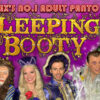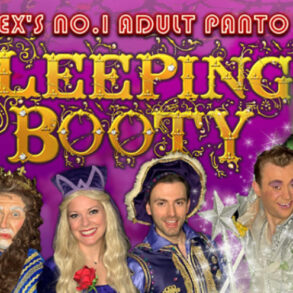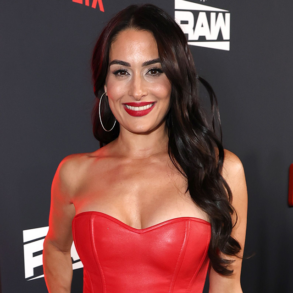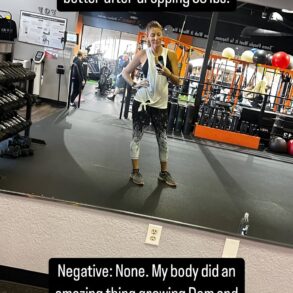
For women in the mid-to-late 19th century, a bad hair day might involve singeing your split ends with a lit candle—and hoping you didn’t set your head on fire.
For men, an 1800s pomade might include bear grease, lard or mutton fat—along with a generous squeeze of apple juice to mask the rancid smell.
Today, the era’s hair obsessions might seem silly—even for generations that endured mullets and mohawks. But to art historian Elizabeth L. Block, B.A. ’94, the post-Civil War pompadours and Gibson Girl bouffants stood for more than just frivolous fashions.
In her new book “Beyond Vanity: The History and Power of Hairdressing” (MIT Press, 2024), Block, a senior editor in the Publications and Editorial Department at the Metropolitan Museum of Art, combs through the complex cultural meaning of 19th century hair. Against a backdrop of high society salons—then called “hair rooms” or “saloons”—she uncovers the stories of often Black and mixed-race business owners forging independent paths in the burgeoning hair industry.
“It was an exciting moment of change in the country—and in hair,” said Block, a former English major and art history minor at George Washington University’s Columbian College of Arts and Sciences (CCAS). “Hair was central to Americans and especially to women’s lives.”
Indeed, Block said hair was entangled in the social strata of the post-war nation, influencing everything from ideologies to economies. On stages, trendsetting actresses like Sarah Bernhardt and Lillie Langtry modeled the latest styles. At parlors and parties, wealthy dynasties like the Astors and the Vanderbilts fussed over meticulously groomed coiffures.
But the hair world also blurred class and racial lines. In shops, hairstyles signaled newfound freedoms for women entering the workplace. And in enslaved people’s quarters, Black women endured the indignities of caring for white people’s hair—while foreshadowing their economic empowerment as pioneers in the hair industry.
The era’s hair revolution wasn’t restricted to “upper-class white women in the Northeast,” Block emphasized. “I was looking at women of all classes, of multiple races. There are stories from the Midwest, the West Coast, New Orleans and throughout the South. In this historical period, hair covered a wide repertoire.”
Art and fashion
As a student at GW, Block fell under the spell of 19th century American painters like John Singer Sargent and Mary Cassatt—often in classes taught by CCAS Professor Emerita of Art History Lilien F. Robinson.
Through the university, Block secured a student internship with the National Gallery of Art, which led to her first post-graduation job as an editorial assistant at the Hirschhorn Museum in D.C. and eventually her current position with New York’s Metropolitan Museum. She received her Ph.D. in art history at The Graduate Center, City University of New York.
As she moved through the professional art world, she was fascinated with depictions of fashion in paintings—even writing a book on French couture titled “Dressing Up: The Women Who Influenced French Fashion” (MIT Press, 2021). The more she viewed figures like the young socialite in Sargent’s “Madame X,” she wondered why art historians had written so much about her black satin dress—but almost nothing about her flaming red hair.
Some art experts “were covering fashion but nobody was covering hairstyles,” she said. “I kept asking myself: Why is hair always last? Why is it viewed as frivolous?”
One reason, Block surmised, is that historians saw over-the-top coifs like outlandish 18th century Marie Antoinette wigs as “preposterous”—a sentiment she doesn’t deny. “The hair of yesteryear—the ‘Bridgeton’ hair that people are latching on to right now—really is kind of absurd,” she laughed.
But Block set out to reclaim the cultural context of hair—particularly within the 19th century rise of the American hair industry. As the hairdressing profession took off, newly manufactured hair products—styling creams, serums and restorers—promised miracles from eliminating grey to patching bald spots to adding shimmer and gloss.
Actresses’ hairstyles set the cultural tone—not unlike Jennifer Aniston’s “Rachel Hair” in “Friends” moved the needle for modern audiences, she noted. Socialites relied on lengthy hairdressing sessions to prepare for a night at the opera or a ball. “The power hairdressers held was extraordinary,” Block explained. “The sought-after ones were booked hour-to-hour. Their [wealthy] clients wouldn’t leave the house unless their hair was styled.”
Across class and race
One of the era’s most popular styles—the Gibson Girl bouffant—became a hallmark of the independence women garnered in the period, Block said. Its light, airy appeal symbolized new societal freedoms—from advertisements of bouffant-wearing women riding bicycles and playing badminton to its popularity with women working in shops and salons. “As a symbol, it’s a powerful hairstyle,” Block said.
Block also examined the complicated relationship between Black women and the era’s hair boom. She imagines the experiences of Black women caring for the hair of their enslavers. “If a Black woman was working in a white woman’s home, one of her main responsibilities would be to style her hair,” she explained. “What must it have felt like to like put your hands into her hair—to help her wash it and style it—when the opportunity to style your own hair was so limited?” she asked.
But Block also highlights Black entrepreneurs who became the period’s hair pioneers. New England’s Christiana Carteaux Bannister, for example, marketed her own products and owned salons. Likewise, Harriet E. (Hattie) Wilson, a former indentured servant to a white family and one of the first African American novelists in the United States, sold hair care products door-to door before establishing her own line across multiple cities. “Their lived experiences are the inspiring and incredible part of this story,” Block said.
Block also appreciates the era’s more outrageous fashions—like the taxidermized kitten headdress socialite Kate Fearing Strong wore to a Vanderbilt party. Likewise, she pointed to Brooklyn designer’s Mademoiselle Louise’s dead bird hair-topper, which featured actual sharp-beaked fowls perched in a “nest” of fiber.
And Block herself is tempted to try a popular 19th century egg yolk shampoo recipe that calls for three broken eggs, castor oil and an apple juice sweetener. “I’m working up the nerve,” she laughed. “But for now, I’ll stay an observer of trends—not a participant.”
This post was originally published on this site be sure to check out more of their content.








